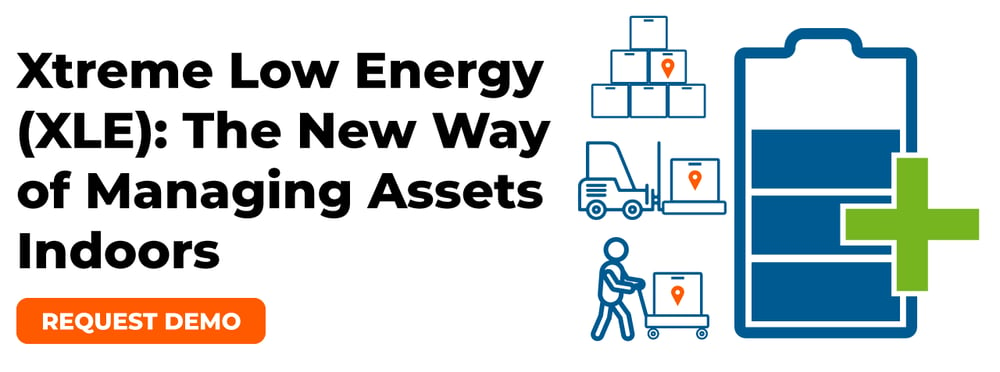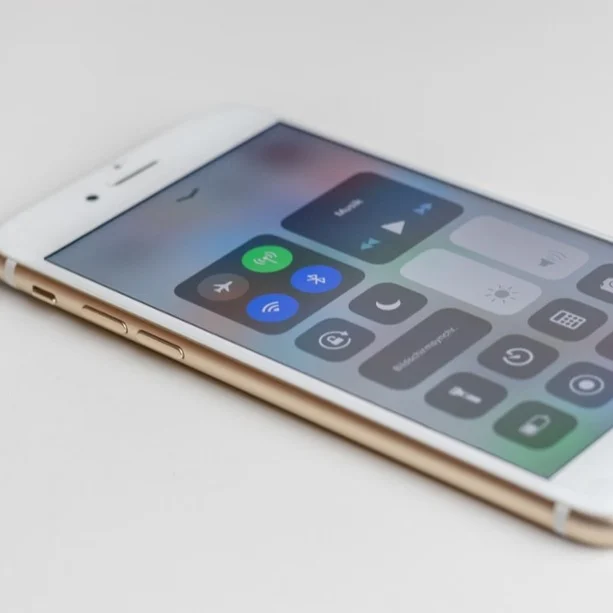By 2023, it’s safe to say that most people know what Bluetooth is, or at the very least, how it’s used in a consumer’s daily life. It’s hard to find consumer technology that isn’t Bluetooth-enabled. Some Bluetooth devices, however, actually run on a more recent innovation called Bluetooth Low Energy (Bluetooth LE or BLE for short). It might be easy to brush off this technology as just a different kind of Bluetooth, but they actually both function in different ways and have different strengths and capabilities. It’s especially important to understand these differences when you’re looking for industrial technologies, as businesses can’t afford to end up with the wrong technology for their needs.
Let’s take a deeper look at the differences and similarities between Bluetooth and Bluetooth LE, as well as outlining their development, uses, and other IoT technologies that build off of the groundwork that these wireless network technologies have established. And most importantly, whether your interest is on the consumer or commercial level, let’s figure out which of these technologies works best for your needs and your budget.
What is Bluetooth?
Before we can understand the difference between the two technologies, we must first understand how they work. Although the first mobile phone with Bluetooth capacity appeared in the market in 2000, the technology did not pick up momentum until 2004 with the introduction of EDR (Enhanced Data Rate). Since then, Bluetooth has gone through many revisions and enhancements. But what is Bluetooth, exactly?
Bluetooth is a wireless technology that allows devices to communicate with each other over short distances using radio waves. It was originally designed for use in audio devices, such as headphones and speakers, but has since been used in a variety of other applications, including file transfer and internet connectivity.
When most people think of Bluetooth, they picture wireless headphones or some other physical device that wirelessly connects you to the data that you’re broadcasting. While not incorrect in common parlance, the “Bluetooth” element of this system is technically the wireless connection that lies between the two connected devices, not either of the devices themselves. In the case of the headphones example, it would be the connection between the headphones and your phone or computer, whatever is housing your audio.
If you’d prefer a more technical definition, Bluetooth is a frequency-hopping radio technology that transmits data packets within the 2.4 GHz band. These packets conduct exchanges through one of 79 designated Bluetooth channels (each of which is 1 MHz in bandwidth) in order for the data to be received. But it is just as accurate to simply say that Bluetooth is an advanced technology that conducts data exchanges over a short range without the need for wires.
Bluetooth devices continue to be invented and recreated. Remember when Apple first introduced AirPods? Now there are several variations of this Bluetooth-enabled device, including advancements that help with strain on battery life. And this brings us to Bluetooth Low Energy.
Join the AirFinder Difference!
- Innovation. Organizations can be freed up to innovate and bring more impactful products and services to market.
- Profitability. Increased profitability provides new opportunities to innovate and improve valuation.
- Digital Transformation. Discover competitive advantages, new revenue opportunities, improved customer relationships, and increased efficiency.
What Is Bluetooth Low Energy?
Bluetooth Low Energy – sometimes referred to as Bluetooth 4.0 – hit the market in 2011. As one might expect from the name, it was designed to be a version of Bluetooth with a lower energy consumption rate. The appeal was that, with low-energy consumption, applications could run on a smaller battery for a longer amount of time without needing a charge or replacement.
How is this lower energy rate accomplished? Similar to Bluetooth, Bluetooth Low Energy technology operates in the 2.4 GHz band. However, unlike Bluetooth, Bluetooth Low Energy remains in sleep mode unless a connection is initiated. The actual connection time only lasts for the few milliseconds that it takes to transfer a small amount of data rather than the constantly-active connection initiated by Bluetooth. While this kind of periodic data transfer is not ideal for listening to music, talking on the phone, or other tasks where data needs to be streamed constantly, it provides a better, low battery option for applications that only periodically exchange data.
Bluetooth and Bluetooth LE: The Key Differences
Bluetooth and Bluetooth LE are different both in terms of capabilities and common uses. Many of these can be plainly observed by reading the individual breakdowns provided above, but it’s also good to draw direct, side-by-side comparisons in order to give those differences their due. After all, you can only use technology to its full potential when you understand the functions and purpose of the technology that you are using. Some of the main technological differences between Bluetooth and Bluetooth Low Energy include:
Battery Consumption
As previously touched upon, Bluetooth Low Energy was conceptualized with the goal of providing a version of Bluetooth that operates at much lower power levels, which means it consumes less energy and has a longer battery life than Bluetooth. Again, a lot of Bluetooth Low Energy’s improved battery life comes down to its ability to place itself in sleep mode until it is needed to conduct a data transfer. Traditional Bluetooth, on the other hand, is always on or off. There’s no in-between state. Also, Bluetooth Low Energy transfers data in far smaller amounts even when it is active, which means that typically, its transmissions require less power than a Bluetooth transmission of a similar length. (Although this can also be affected by what type of data is being transmitted.)
Data Transfer Rates
Another important technical difference between Bluetooth and Bluetooth Low Energy is their data transfer rates. Bluetooth has a transfer rate of up to 2.1 Mbps, while Bluetooth Low Energy has a transfer rate of up to 1 Mbps. This difference makes sense when considering the goals of these technologies. Bluetooth requires a higher data transfer rate because it was originally designed for continuously streaming data applications. It was designed to let consumers receive data and talk at the same time, and quickly exchange videos from one device to another. And as we’ve already discussed, Bluetooth LE was designed with the priority of minimizing power consumption and maximizing battery life in devices where seamless data is not as important, so naturally some of that transfer rate is going to be deprioritized.
Latency Rates
Even though Bluetooth has a higher transfer rate, Bluetooth Low Energy has a lower latency rate. While transfer rates measure how quickly data can be transmitted through connected devices, latency is a measure of how long it takes a connected device to respond to user input. Bluetooth transmits data faster, but responds to input slower; Bluetooth Low Energy transmits data slower, but responds to input faster. Again, this difference makes perfect sense when considering the goals of these technologies. Bluetooth is designed primarily for data broadcast purposes; there is very little reason to be concerned about response to input simply because there often isn’t much input. Once the device is set to broadcast music or facilitate a phone conversation, it’s pretty much good to go until the user decides to turn it off. However, Bluetooth Low Energy is the successor of Bluetooth, and it was designed in part for uses beyond the simple broadcasting of data for consumers.
M2M and IoT Applications for Bluetooth and Bluetooth Low Energy
Both Bluetooth and Bluetooth Low Energy have a wide range of applications. As previously touched upon, Bluetooth is most commonly used in audio devices, such as headphones and speakers, as well as in file transfer and internet connectivity. It can also be used in home automation systems, such as smart locks and thermostats. Regardless, its application is typically consumer-based, with Bluetooth-enabled devices being intended for the average consumer to purchase and use on their own.
Bluetooth Low Energy, on the other hand, finds many of its users beyond the sphere of consumers. Although it is also used in personal devices like fitness trackers and smart watches – technologies that are more concerned with data collection than data broadcasting – Bluetooth Low Energy finds its most promising applications in commercial spaces. In maintaining consistency with its use for personal data collection devices, Bluetooth Low Energy is commonly used in healthcare technologies like glucose and blood pressure monitors. But it is also used heavily in industrial settings in the form of location-based services, through Bluetooth trackers that employ tags and sensors to detect and transmit location and condition data to help operators make informed business decisions and maintain visibility of their processes.
Let’s summarize some of the specific M2M or IoT devices that use either Bluetooth or Bluetooth Low Energy:
Bluetooth Devices and Applications
- Wireless headphones and headsets
- Wireless speakers
- Wireless keyboards and printers
- Bluetooth-enabled file-transfer
- Hands-free calling car integrations
- Internet hotspots
Bluetooth Low Energy Devices and Applications
- Industrial monitoring
- Glucose and blood pressure monitoring
- Consumer health monitoring (ex. Fitbit)
- Smart watches
- Geography-based promotional targeting
- Public transportation apps
Bluetooth 5.0 and the Industrial Revolution
Since 2011, Bluetooth has continued to make revisions and enhancements. A significant change occurred in 2016 with the introduction of Bluetooth 5.0, which significantly increased the technology’s range, speed, and data capacity.
A few years later, in 2020, the Bluetooth Special Interest Group (SIG) introduced Bluetooth Low Energy Audio. This technology allows one device to share audio with multiple other devices. For example, one smartphone can share audio with several headphones simultaneously. This technology began to experience a more widespread consumer release in 2022, with the expectation that it will continue to become more prevalent within the coming years. Although this use case caters to the consumer market, it is another example of how this wireless communication technology continues to grow. Bluetooth is a changing technology, and many of its consumer applications might spark new applications for industrial settings, too. Only time will tell what Bluetooth 6.0 might have in store for us.
Bluetooth Low Energy Asset Tracking
One of the industrial applications that Bluetooth LE can be used for is BLE asset tracking. Bluetooth Low Energy asset tracking only requires a short burst of data to be transmitted in order to communicate information about the location or condition of an asset, so it’s an ideal example of an area in which to use BLE over traditional Bluetooth. After all, a location tracker isn’t any good if the battery dies before it can tell you its location!
BLE tags are mass-produced, rendering BLE asset tracking an extremely affordable, extremely adaptable solution for companies looking to maintain visibility of their equipment, products, and other assets. It is, however, best used within facilities or on a campus; although more precise than location technologies like GPS, BLE trackers require infrastructure to operate, so it is most useful in locations where that technology can be strategically installed to provide optimal visibility.
Many modern asset tracking solutions rely at least in part on BLE due to its affordability and transmission-oriented design. It can provide accuracy within meters in contrast to how many location technologies are designed to establish between more widespread sites or locations. Even so, batteries eventually die and the more you depend on a device, the quicker power consumption takes its toll. And what good is a location solution that cannot continue to provide location data? Luckily, just as Bluetooth has wrought Bluetooth LE, Bluetooth LE has wrought innovations of its own.
Let’s Take It a Step Further – Xtreme Low Energy
Link Labs has patented one such innovation – AirFinder Xtreme Low Energy (XLE®). As an enterprise asset visibility solutions company, the goals of our innovations are even more specific than those that led to Bluetooth location tracking, driving us to engineer a solution with the specific purpose of improving the asset tracking capabilities of BLE.
Our AirFinder XLE® solution provides an even more impressive battery life than BLE, lasting up to 5 to 7 years rather than 3 to 5 years. It relies on the same mass-produced tags as BLE, but supplements the existing location technology with phase-ranging firmware for additional, submeter accuracy. Essentially, this firmware allows for the identification of a tag’s location by triangulating between multiple infrastructure components and XYZ coordinates. In this way, XLE® can provide greater accuracy with less necessary infrastructure than BLE.
Since releasing this technology in 2021, XLE® has proven itself in a number of asset visibility use cases and industrial settings. It operates best within established locations where the necessary infrastructure can be installed. This is particularly useful for warehouses and scalable manufacturing operations, as it provides a greater granularity than BLE that works for close-quarters while requiring less additional infrastructure. This is important in case the company’s capacity, location, or number of assets begins to increase, because it requires minimal new infrastructure outside of added tags. And since XLE® operates on modified BLE tags, there are endless options for condition monitoring, as well, providing visibility for temperature, humidity, shock, and more.
Since innovation never stops, we also don’t stop. In April 2023, we announced the release of our AirFinder Ultra system, which combines our existing XLE® solution with Ultra-wideband (UWB) for greater accuracy and expanded applications. Unlike XLE®, UWB tracking is traditionally a power-hungry method of asset tracking; thus, it is also more expensive to implement and maintain despite its significantly greater precision. However, by combining it with our patented XLE® technology, Link Labs is able to prove the up to 30-centimeter accuracy of UWB with no significant increase in power consumption or cost. This system functions on the same power-consumption level as XLE® alone, providing the extended battery life you’ve come to expect from AirFinder with greater returns on accuracy. Like BLE and XLE® alone, this infrastructure and level of precision is ideal for use within facilities and business campuses; unlike BLE and XLE® alone, AirFinder Ultra can consistently distinguish between even neighboring workstations. Again, all with the same energy-saving power of XLE®! And all these innovations were, of course, sparked by simple Bluetooth and BLE! Who knows what’s in store for the next stage of innovation, especially with the rising promise of Bluetooth 6.0?
Bluetooth vs. Bluetooth Low Energy – The IoT Difference
To recap, Bluetooth and Bluetooth Low Energy are similar in that they help users connect to their most important devices. However, they are different in their energy consumption, as well as what capabilities their design prioritizes and what applications they are most often used for.
Bluetooth can transmit a lot of data at a time, but it quickly consumes battery life. This makes it a more practical technology for devices that are designed to broadcast media or enable other immediate functions. This might include Bluetooth-enabled headsets, speakers, and keyboards. Bluetooth-enabled devices are usually made and marketed for consumers, for buyers to purchase and use for themselves.
Bluetooth Low Energy, on the other hand, is used for applications that do not need to exchange large amounts of data and can run on battery power for years at a cheaper cost. After all, if you’re only transmitting small amounts of data at a noncontinuous rate, it makes sense to deprioritize speed and prioritize energy savings. Most Bluetooth LE devices record data rather than actively broadcasting input. While this can be used in personal devices like Fitbits and smartwatches, it finds most of its use in medical and industrial devices.
One such industrial use of BLE is within asset tracking, where it is ideal for periodically transmitting location and condition information about individual assets. Further innovations have been enacted based on BLE technology and its use as a location tracking device, including Link Labs’ patented XLE® technology and our latest combination of XLE® and UWB. With our newest developments, asset tracking expands on the basics of BLE technology to provide 30-centimeters of accuracy at a lower cost than using UWB alone.
If you’re still comparing various technologies for an asset tracking platform, please don’t hesitate to reach out to a Link Labs representative for more information. Across our tenure, Link Labs has been pioneering Bluetooth solutions to bring you the most energy efficient and affordable solution for manufacturing and logistics operations just like yours. Book a demo today!




